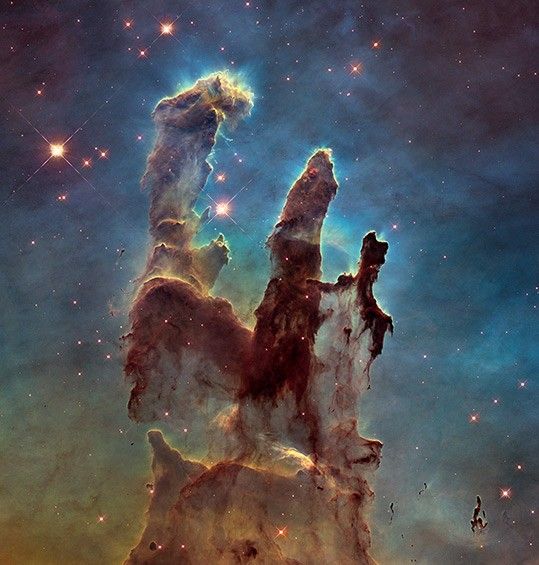Saturn is truly the lord of the rings in this latest snapshot from NASA's Hubble Space Telescope, taken on July 4, 2020, when the opulent giant world was 839 million miles from Earth. This new Saturn image was taken during summer in the planet's northern hemisphere.
Hubble found a number of small atmospheric storms. These are transient features that appear to come and go with each yearly Hubble observation. The banding in the northern hemisphere remains pronounced as seen in Hubble's 2019 observations, with several bands slightly changing color from year to year. The ringed planet's atmosphere is mostly hydrogen and helium with traces of ammonia, methane, water vapor, and hydrocarbons that give it a yellowish-brown color.
Hubble photographed a slight reddish haze over the northern hemisphere in this color composite. This may be due to heating from increased sunlight, which could either change the atmospheric circulation or perhaps remove ices from aerosols in the atmosphere. Another theory is that the increased sunlight in the summer months is changing the amounts of photochemical haze produced. "It's amazing that even over a few years, we're seeing seasonal changes on Saturn," said lead investigator Amy Simon of NASA's Goddard Space Flight Center in Greenbelt, Maryland. Conversely, the just-now-visible south pole has a blue hue, reflecting changes in Saturn's winter hemisphere.
Hubble's sharp view resolves the finely etched concentric ring structure. The rings are mostly made of pieces of ice, with sizes ranging from tiny grains to giant boulders. Just how and when the rings formed remains one of our solar system's biggest mysteries. Conventional wisdom is that they are as old as the planet, over 4 billion years. But because the rings are so bright – like freshly fallen snow – a competing theory is that they may have formed during the age of the dinosaurs. Many astronomers agree that there is no satisfactory theory that explains how rings could have formed within just the past few hundred million years. "However, NASA's Cassini spacecraft measurements of tiny grains raining into Saturn's atmosphere suggest the rings can only last for 300 million more years, which is one of the arguments for a young age of the ring system," said team member Michael Wong of the University of California, Berkeley.
Two of Saturn's icy moons are clearly visible in this exposure: Mimas at right, and Enceladus at bottom.
This image is taken as part of the Outer Planets Atmospheres Legacy (OPAL) project. OPAL is helping scientists understand the atmospheric dynamics and evolution of our solar system's gas giant planets. In Saturn's case, astronomers continue tracking shifting weather patterns and storms.
The Hubble Space Telescope is a project of international cooperation between NASA and ESA (European Space Agency). NASA's Goddard Space Flight Center in Greenbelt, Maryland, manages the telescope. The Space Telescope Science Institute (STScI) in Baltimore, Maryland, conducts Hubble science operations. STScI is operated for NASA by the Association of Universities for Research in Astronomy in Washington, D.C.

































